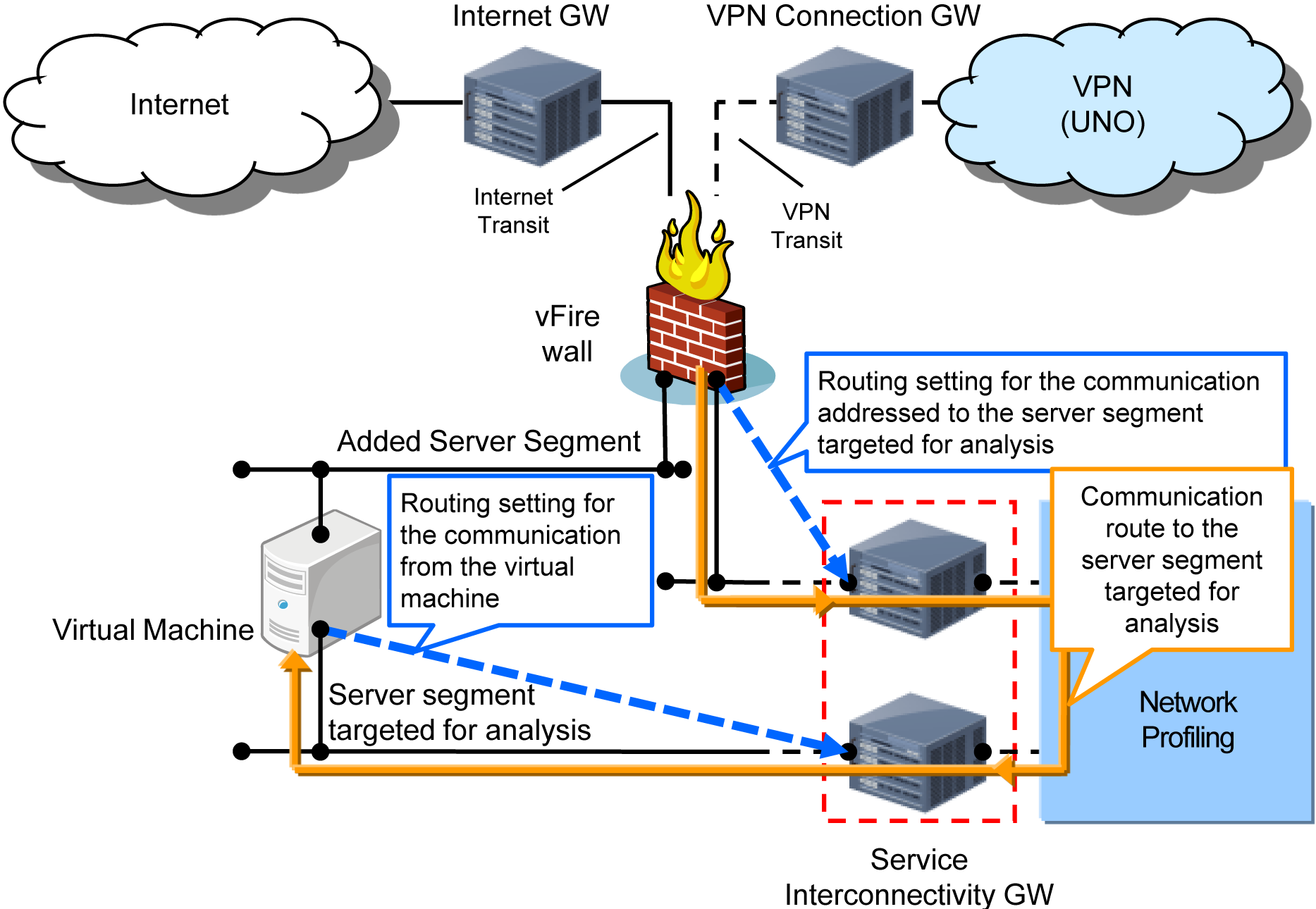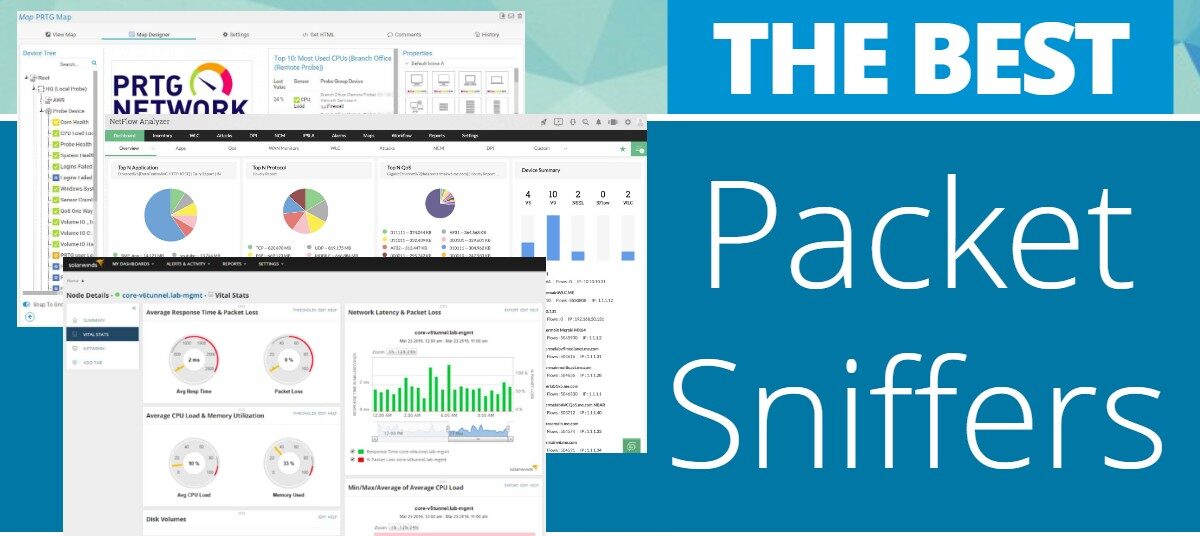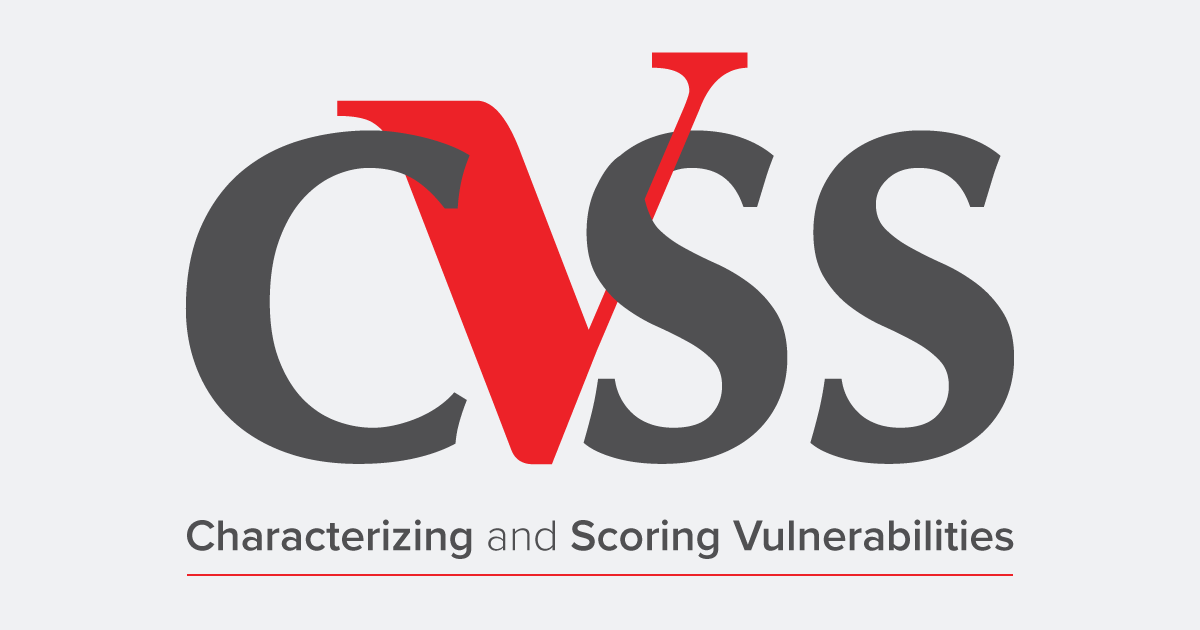As cyber threats evolve and become more sophisticated, organizations need robust security measures to secure their networks from emerging cyber-attacks. Firewalls are essential in network security as a buffer between trusted internal and untrustworthy external networks.
How Do Firewalls Work?
Firewalls monitor and filter traffic between an organization’s internal and external networks like the internet. However, this action uses predetermined rules to decide what can pass and which can’t.
Furthermore, firewalls work at various layers in the OSI model, including network, transport, session, and application layers. Depending on their type, firewalls use various means to inspect traffic, such as packet filtering, stateful inspection, or deep packet inspection. Consequently, the inspection is done to screen out malicious traffic or block it completely.
Ultimately, firewalls provide an integral layer of defense, monitoring, and controlling traffic to stop unauthorized access, data breaches, and cyber attacks from occurring.
Importance of Firewalls
Firewalls are essential for safeguarding computer networks against unwarranted access and cyber threats. In addition, it acts as an intermediary between trusted internal networks like an organization’s intranet and untrusted external ones. By filtering incoming and outgoing traffic, firewalls help stop unauthorized entry while decreasing data breaches or cyber-attacks.
Furthermore, firewalls have become essential to network security strategies under increased cyber threats and network vulnerabilities. Therefore, organizations need a robust solution to safeguard their networks from attack.
Keep reading for the top 6 reasons for using firewalls.
Safeguard Against Unauthorized Access
Firewalls monitor and filter incoming and outgoing traffic to determine what types of activity should be allowed or blocked. They can effectively block access from sources compromising security, such as hackers, malware, or any other threats. Consequently, this protection is meant to prevent potential danger from entering networks.
Furthermore, firewalls reduce the risk of security breaches, data loss, and other cyber threats by restricting unauthorized access. Also, they provide businesses with an additional layer of security by restricting network resource access only to authorized users.
Ultimately, in today’s interdependent society, firewalls are essential in guarding against potential security risks while safeguarding sensitive data.
Reduce the Risk of Cyber-Attacks
By monitoring network traffic, firewalls can detect and prevent known threats like malware, viruses, and cyber-attacks. Consequently, this helps to identify any unusual activity in real-time and block it accordingly.
Additionally, firewalls help businesses protect themselves against cybercrime by mitigating risk from cyber-attacks and safeguarding data from breaches and financial loss. Further, with more sophisticated cyber-attacks becoming ever more frequent and widespread in our digitalized landscape, firewalls play a pivotal role in mitigating risk.
Ultimately, this step guarantees sensitive information remains safe from loss or breach.
Check for Compliance with Regulations
Numerous industries and regions impose regulations regarding data security compliance that organizations must abide by when managing. These include HIPAA in healthcare or GDPR for organizations in Europe.
In addition, firewalls provide users with a means of complying with regulatory requirements. This action happens by offering adequate data security, restricting access, and tracking network activity. By fulfilling regulatory demands, users can avoid costly fines, legal complications, and damage to their reputations.
Secure Remote Access
Firewalls provide employees working remotely access to networks securely without jeopardizing security. Furthermore, firewalls enable remote employees to gain VPN connections that allow access to both resources within a network.
In addition, businesses with remote workforces or employees that frequently work off-site will find this feature particularly valuable. This functionality is because it provides employees secure remote access so they may work securely from any location at any time.
Eventually, this ensures productivity increases as employees no longer feel limited by working only within certain hours or locations.
History of Firewalls
Firewalls have become a cornerstone of modern cybersecurity, providing critical protection from unauthorized access and cyber-attacks. Unfortunately, however, their history remains relatively obscure for most.
We will look into that history, from their origins as early computer networking technologies to their present-day importance. In addition, we will offer insights into this tool’s development over time and why its importance persists today.
Early Firewalls
As computer networking spread, security became a top priority. At first, attempts at protecting networks centered on creating simple access control lists allowing administrators to filter traffic. However, this was based on source and destination addresses, and eventually, more effective measures had to be employed to secure networks properly.
Specifically, early firewalls emerged during the 1980s to respond to increasing cyber-attacks. Mostly packet filtering systems emerged as early firewalls capable of filtering traffic based on IP addresses, ports, or protocols.
In addition, the circuit-level gateway also emerged as an early firewall, designed to monitor network connections and filter traffic depending on their state.
Finally, among the early firewalls was Stateful inspection, which soon gained popularity as a more sophisticated filtering resource. Thus, this resource assisted in monitoring connections to allow or block traffic according to predetermined rules.
Evolution of the Firewalls
Firewalls have advanced substantially recently, from basic packet filtering firewalls to sophisticated next-generation and cloud firewalls. Furthermore, application layer gateways offer even further security by filtering traffic based on application layer protocols.
Additionally, next-generation firewalls feature sophisticated capabilities like deep packet inspection, intrusion prevention, and application control. This development has, however, assisted in identifying and preventing more sophisticated cyber-attacks effectively.
Cloud firewalls represent the latest evolution in firewall technology, providing flexible yet scalable security solutions across various cloud environments. Ultimately, firewall development reflects an ever-evolving cybersecurity environment and demands more advanced protection solutions.
The Modern Firewalls
Modern firewalls have evolved greatly over the past decade, featuring increasingly sophisticated features to combat cyber threats. Next-generation firewalls provide deep packet inspection, application control, and intrusion prevention.
Next, cloud firewalls offer flexible security solutions suitable for deployment across multiple cloud environments. However, other new modern firewalls have made an incredible breakthrough in cybersecurity protection against cyber threats, surpassing their predecessors.
Such sophisticated features provide businesses robust protection against modern cyber threats while making operations in today’s digital landscape safer and easier.
Types of Firewalls
Packet-Filtering Firewall
Packet-filtering firewalls were among the earliest network security solutions created to offer network protection. Additionally, this firewall ensures network traffic filtering based on criteria including source and destination IP addresses, port numbers, and protocols.
Ultimately, the firewalls offered basic protection first and remain widely employed today as part of more comprehensive firewall solutions.
Components
A firewall’s ruleset consists of rules which establish which types of traffic it allows or blocks. Similarly, an access control list (ACL) comprises IP addresses, ports, and protocols used by the firewall for filtering inbound/outbound traffic flows. Additionally, its network interface acts as the passageway through which these flows enter/exit the network.
Logging is another essential function of packet-filtering firewalls. They store data about network traffic, such as source and destination IP addresses, ports, and protocols used. Eventually, this data can then be utilized for troubleshooting and compliance reporting purposes.
Advantages and Disadvantages
These firewalls are easy to configure, have a minimal performance impact, and offer cost-effective protection from cyber threats. Consequently, it makes them the ideal solution for small networks with minimal protection needs.
Furthermore, packet-filtering firewalls offer limited defenses against sophisticated attacks like IP spoofing. In addition, packet filtering firewalls cannot inspect packet content, thus being incapable of detecting and blocking malware. Hence, these firewalls may not suffice if networks require enhanced cyber defense solutions.
Examples
Examples of packet-filtering firewalls include Cisco ASA, pfSense, iptables, and Windows Firewall. Nonetheless, each offers basic network traffic analysis with filters based on rulesets to filter packets based on predefined rulesets and provide some protection.
Stateful Inspection Firewall
Stateful inspection firewalls are an advanced form of network protection that analyzes all network connection aspects. Accordingly, the firewall keeps track of each connection’s stateful inspection firewalls and identifies legitimate traffic while blocking malicious threats from accessing systems.
Components
Stateful inspection firewalls feature various components, including a state table for tracking every connection passing through their firewall. Secondly, they also have packet inspection engines that examine packet payloads for malicious content.
Furthermore, stateful inspection firewalls utilize access control lists (ACLs) to filter traffic based on IP addresses, ports, and protocols.
Advantages and Disadvantages
Stateful inspection firewalls offer greater network security while improving performance by decreasing the load on the network. Stateful inspection firewalls feature more granular control over network traffic and offer comprehensive protection by analyzing its state.
Unfortunately, stateful inspection firewalls are more expensive and complex to configure than packet filtering firewalls. Additionally, they may offer limited DDoS attack defense as a result.
Examples
Stateful inspection firewalls can be purchased from many vendors, including Check Point, Cisco, Fortinet, Palo Alto Networks, Juniper Networks, and SonicWall. Moreover, these devices offer fine control over network traffic, comprehensive protection from cyber threats, and advanced monitoring and reporting tools.
Application-Level Gateway Firewall
An application-level gateway firewall, commonly known as a proxy firewall, operates at the application layer of the OSI model. Additionally, it intercepts and analyzes network traffic between client computers and servers, adding another level of protection against attacks.
Components
An application-level gateway firewall typically comprises a proxy server that filters inbound and outbound traffic on behalf of clients. Furthermore, it includes rulesets defining which traffic should be allowed or blocked and log monitoring capabilities.
Advantages and Disadvantages
Application-level gateway firewalls offer superior levels of protection as they inspect traffic at the application layer. Consequently, it helps to detect advanced threats and filter specific apps as desired.
Moreover, they also feature granular control over traffic, which enables specific apps to be filtered out or monitored. However, their main downside may be slower performance since traffic must go through proxy servers.
Furthermore, they are more complicated to set up and manage. Plus, there may be compatibility issues due to some apps not supporting proxy server functionality.
Examples
Application-level gateway firewalls include Barracuda CloudGen, Cisco Adaptive Security Appliance (ASA), and Sophos XG Firewall. Generally, these firewalls boast advanced application-layer filtering and inspection capabilities to defend against sophisticated cyber threats.
Circuit-Level Gateway Firewall
Circuit-level gateway firewalls operate at the session layer of the OSI model and create an additional layer of security against attacks. Thus, it creates an encrypted circuit between the client and server and monitors all traffic that travels along it.
Eventually, it creates additional layers of defense against network attacks while adding another level of protection for clients and servers.
Components
Circuit-level gateway firewalls typically incorporate rulesets that determine which traffic should be allowed or blocked based on the state of each connection. However, this is done along with monitoring capabilities to identify suspicious activity and logging and reporting capabilities to monitor network activity.
Furthermore, they often feature NAT and VPN features to enhance security further.
Advantages and Disadvantages
Circuit-level gateway firewalls tend to be faster and less resource-intensive than other firewall forms, operating at lower layers in the OSI model. Significantly, they are more secure because only traffic associated with established sessions passes through.
Unfortunately, circuit-level gateways lack some key capabilities compared to other firewall forms. For example, being unable to inspect packet content could make them susceptible to certain attacks. Also, not providing advanced logging and reporting features like other forms could be a weakness.
Examples
Circuit-level gateway firewalls may no longer be widely utilized. However, examples like Cisco PIX Firewall and Juniper Netscreen Firewall still exist.
Next-Generation Firewall
Next-generation firewalls are advanced firewall technology that combines traditional techniques with more modern features. Additionally, next-generation firewalls are designed to deliver advanced security without compromising performance. Consequently, it is the ideal solution for organizations with stringent security requirements.
Furthermore, next-gen firewalls offer greater granular network traffic control, allowing organizations to implement more comprehensive policies.
Components
As an illustration, the combination comprises intrusion detection and prevention, application awareness, and deep packet inspection. The firewalls also offer user identification, VPN connectivity, and cloud integration for cloud integration.
Advantages and Disadvantages
Next-generation firewalls (NGFWs) offer advanced threat identification and blocking abilities and increased network visibility and application awareness. In consequence, it improves application awareness and traffic visibility.
In addition, they offer deep packet inspection, intrusion detection & prevention (ID&P), SSL inspection, and user identification/identification policies as granular control over network traffic. Furthermore, user ID management and access policies can all be accomplished using one device.
However, their more complicated setup/management may incur higher costs with increased potential errors and decreased performance. This weakness is due to the increased functionality/processor power requirements of some NGFWs compared with their counterparts.
Examples
Next-generation firewalls include Cisco ASA, Check Point Next Generation Firewall, Fortinet FortiGate, Palo Alto Networks PA Series, and Juniper Networks SRX Series.
Cloud Firewalls
Cloud firewalls are security systems that safeguard cloud networks and servers against various cyber threats. Furthermore, cloud-based environments use them to monitor and control traffic coming in and out of their networks.
However, this ability is enabled through data analysis techniques to detect malicious traffic while permitting legitimate traffic.
Components
Cloud-based firewalls are specifically designed to safeguard virtual machines and other cloud resources. Specifically, they offer features like traffic filtering, intrusion detection, and protection against distributed denial-of-service (DDoS) attacks.
Advantages and Disadvantages
As cloud firewalls are hosted online, they can quickly adapt to changing business needs by being scaled up or down. Furthermore, they offer more convenience than traditional firewalls since they can be accessed anywhere with internet connectivity.
Additionally, they are more cost-efficient by eliminating physical hardware purchases and maintenance expenses.
However, the firewalls rely on third-party providers, which may not always provide reliable or secure service, and data privacy and breach risks may arise. In addition, cloud firewalls may require more complex configuration and management procedures than other firewalls.
Examples
Popular cloud firewalls include AWS Firewall Manager, Azure Firewall, and Google Cloud Firewall. Accordingly, each offers comprehensive protection to organizations operating within the cloud environment.
Comparison of Firewalls Types
Level of Security
Specific types of firewalls provide advanced features like packet filtering and intrusion prevention systems, while others, like Packet-Filtering Firewalls, provide more basic protection.
Granularity of Control
Firewalls can vary widely in their ability to control traffic granularly. For example, circuit-level gateway firewalls offer limited packet inspection capability, while next-generation firewalls offer finer control.
Performance Impact
Different firewalls may have differing impacts on network performance. For example, packet-filtering firewalls tend to have a minimal performance impact, while application gateway firewalls could have greater resource demands.
Wrapping Up
Firewalls are essential tools in protecting networks against cyber threats, providing essential protection. However, there are six common kinds of firewalls: packet-filtering, stateful inspection, application-level gateway, circuit-level gateway, next-generation, and cloud firewalls.
In addition, these firewall types have distinct advantages and disadvantages. Specifically, security policies, remote access, application protection, network segmentation, real-time threat detection, and central management help define these firewalls.
Generally, as cyber threats increasingly evolve, organizations should carefully assess their needs and select an adequate firewall to secure their network resources effectively. Ultimately, firewalls have become more significant in protecting sensitive network assets and information.




